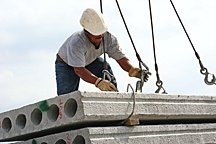New changes to the administrative guidelines for the state of California that govern appropriate treatment for workers' compensation cases now include acupuncture as part of an acceptable medical regimen.
 The California Division of Workers' Compensation (DWC) "monitors the administration of workers' compensation claims, and provides administrative and judicial services to assist in resolving disputes that arise in connection with claims for workers' compensation benefits" (www.dir.ca.gov/dwc/dwc_home_page.htm). In order to do this, it uses the Medical Treatment Utilization Schedule to provide guidelines for treatments that will be covered under workers' compensation. The American College of Occupational and Environmental Medicine's Occupational Medicine Practice Guidelines (ACOEM Practice Guidelines) were used to provide an evidence-based reasoning for the various treatments. However, the ACOEM guidelines only make a brief mention of acupuncture for shoulder complaints.
The California Division of Workers' Compensation (DWC) "monitors the administration of workers' compensation claims, and provides administrative and judicial services to assist in resolving disputes that arise in connection with claims for workers' compensation benefits" (www.dir.ca.gov/dwc/dwc_home_page.htm). In order to do this, it uses the Medical Treatment Utilization Schedule to provide guidelines for treatments that will be covered under workers' compensation. The American College of Occupational and Environmental Medicine's Occupational Medicine Practice Guidelines (ACOEM Practice Guidelines) were used to provide an evidence-based reasoning for the various treatments. However, the ACOEM guidelines only make a brief mention of acupuncture for shoulder complaints.
The new acupuncture guidelines state, in part:
(B) Indications for acupuncture or acupuncture with electrical stimulation include the following presenting complaints in reference to the following ACOEM Practice Guidelines Chapter Headings:
(i) Neck and Upper Back Complaints
(ii) Elbow Complaints
(iii) Forearm, Wrist and Hand Complaints
(iv) Low Back Complaints
(v) Knee Complaints
(vi) Ankle and Foot Complaints
(vii) Pain, Suffering and the Restoration of Function
(C) Frequency and duration of acupuncture or acupuncture with electrical stimulation may be performed as follows:
(i) Time to produce functional improvement: 3 to 6 treatments.
(ii) Frequency: 1 to 3 times per week
(iii) Optimum duration: 1 to 2 months
(D) Acupuncture treatments may be extended if functional improvement is documented as defined in Section 9792.20(e).
(E) It is beyond the scope of the Acupuncture Medical Treatment Guidelines to state the precautions, limitations, contraindications or adverse events resulting from acupuncture or acupuncture with electrical stimulations. These decisions are left up to the acupuncturist.
Shoulder complaints would continue to be treated according to the existing ACOEM guidelines.
California Labor Code Section 4600 specifically mandates that employers must provide injured workers with appropriate treatment including acupuncture, if needed, according to ACOEM guidelines. The Labor Code states:
(a) Medical, surgical, chiropractic, acupuncture and hospital treatment, including nursing, medicines, medical and surgical supplies, crutches and apparatuses, including orthotic and prosthetic devices and services, that is reasonably required to cure or relieve the injured worker from the effects of his or her injury shall be provided by the employer. In the case of his or her neglect or refusal reasonably to do so, the employer is liable for the reasonable expense incurred by or on behalf of the employee in providing treatment.
(b) As used in this division and notwithstanding any other provision of law, medical treatment that is reasonably required to cure or relieve the injured worker from the effects of his or her injury means treatment that is based upon the guidelines adopted by the administrative director pursuant to Section 5307.27 or, prior to the adoption of those guidelines, the updated American College of Occupational and Environmental Medicine's Occupational Medicine Practice Guidelines.
According to Susan Gant, with the DWC, the new acupuncture guidelines were put into place in an effort to bring in more evidence-based medicine and align the guidelines with the California Labor Code regarding treatment of injured workers. "We adopted Colorado's guidelines in an effort to bring the guidelines into alignment with the current Labor Code and strike a balance between the current guidelines and evidence-based medicine," Gant said. In a statement to the press, Gant added, "Our goal is for injured workers to get prompt and effective treatment so they can get back to work quickly, and if acupuncture can help them do it, then right on,"
A copy of the new acupuncture regulations is available here.



